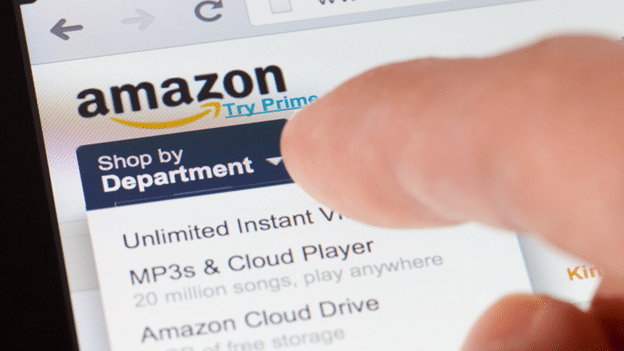Understanding seasonality shifts is crucial for sellers, marketers, and customers. We only need to think about the rise of sales during the holiday season to know this is true.
Then there are the surges during Amazon Prime Day, or the back-to-school sales frenzy. So, it’s important to analyze this phenomenon to discover new sales opportunities. Not only that, but you’ll also gain unique insights about consumer behavior.
What is Seasonality?
“Seasonality” refers to periodic surges in sales during certain dates. For example, St. Patrick’s Day, Halloween, or end-of-the-year events like Black Friday.
Note that seasonality is not about small factors that lightly affect performance. It’s about a predictable fluctuation that affects customer behavior. For example:
Think of product sales during specific dates, like Christmas or Spring Break. You’ll notice that some offers will increase in demand, while others will drop in sales. That is what seasonality is all about.
Here are other factors that contribute to the seasonality effect:
- Weather conditions
- Local holidays
- Cultural traditions
- Societal trends
This seasonal effect is a yearly constant for all sellers. It can account for an unexpected rise or an unforeseen drop in sales.
How Can Seasonality Affect Sales Performance?
When a fast-paced season comes around, brands get ample room to drive awareness and sales. However, such times can also cause confusion.
Imagine a beachwear store trying to increase sales during winter. Yes, some customers might dream of a sun-soaked holiday, but beachwear sales will inevitably take a hit. In contrast, users might rush to buy winter coats, thus increasing demand for such apparel.
But seasonality is not only subject to the seasons. For example, retailers can experience a unique sales surge around Christmas or Valentine’s Day. But then, they’ll experience a drop in purchases afterwards.
Each industry has its own seasonality patterns to deal with. Understanding such trends is crucial to plan ahead, manage your inventory and create effective marketing campaigns.
When you account for special dates and holidays, you can determine how to adjust your business strategy according to the times. In doing so, they’ll maintain sales consistency, and protect their revenue.
Niche Markets with Seasonal Undercurrents
Beyond the overarching seasonal trends, Amazon sales exhibit oscillations within various niche markets throughout the year. These fluctuations encompass different seasonal products and categories. For example:
- Outdoor and gardening supplies in spring
- Fitness and wellness products right before New Year
- Home organization essentials in January
Astute sellers can proactively anticipate and devise strategies to exploit these seasonal spikes. Let’s find out when and how to do this.
Below, we delve into the seasonality effect on Amazon, and how this will affect 2023 Amazon trends that drive the platform’s revenue.
The Surge of the Holiday Season
The Amazon holiday season stretches from late November to December. This time stands as the zenith of sales on Amazon, besides Prime Day.
Encompassing sales days like Black Friday and Cyber Monday, this period entices consumers to search for and grasp exclusive discounts and deals. It’s the unique combination of gift hunting, seller promotions, and heightened consumer spending that upswings sales.
Amazon witnesses a pronounced upsurge in orders across diverse categories during this period. As shoppers embark on a quest for the perfect present while capitalizing on time-limited offers, sellers bask in a heightened spike in sales.
To capitalize on the seasonality effect, many sellers allocate resources in a series of strategies. For example, Amazon ad campaigns and product listing optimization. Plus, brands also stock up the warehouse, so they have sufficient inventory to satiate demand.
Prime Day Bonanza
Amazon Prime Day is another pivotal catalyst for the seasonality effect on Amazon. Prime Day is usually hosted in mid-July for 2 days. During this time, customers are exposed to a torrent of tantalizing product discounts, rivaling the allure of the holiday season.
This is Amazon’s flagship event. As such, Prime Day not only bolsters sales in the marketplace. It also fuels a surge in Prime subscriptions, as consumers aspire to unlock exclusive benefits.
Plus, let’s remember that the impact of Prime Day on Amazon sales is two-fold:
- It generates a momentous revenue surge during the event itself, magnetizing shoppers with irresistible price cuts.
- It ignites a sustained sales propulsion for the following weeks.
Sellers can harness this phenomenon by strategically timing promos and ads to sustain momentum and ensnare the attention of post-Prime Day deals.
Back-to-School Frenzy
Late summer bears witness to the back-to-school season, yet another avenue to drive sales. This is the time when students and parents brace themselves for the forthcoming academic year.
At the same time, eCommerce sees a surge in demand for school supplies, textbooks, electronics, and dorm room essentials. Amazon’s colossal array of offerings, fast shipping, product variety and competitive pricing, render it an alluring destination for back-to-school shoppers.
To harness the back-to-school whirlwind, sellers can work on the following tactics:
- Optimize product listings by aligning them with relevant keywords and categories.
- Offering exclusive promotions. For example, creating product bundles with related products.
- Furnishing valuable educational content to highlight a product’s features and value to customers.
- Use tailored ads and social media to cater to specific demographics, like college students in a specific area or city.
Final Thoughts
Remember, perpetual change is the norm—that’s what seasonality is all about. So, what does it take to make the Amazon seasonal sales work for you? Adaptability, innovation, and an unwavering commitment to meet customer needs.
It’s about harnessing the power of data-driven insights, embracing market trends, and fostering a customer-centric approach to sales. That’s how brands and marketers can deftly navigate times of crisis, and the intricate nuances of Amazon seasonal sales.
By adapting your sales strategies and diversifying your offers according to the times, you’ll ride the consent seasonality waves with ease.
Author





